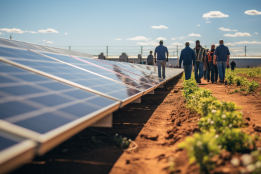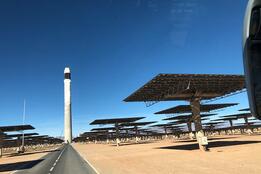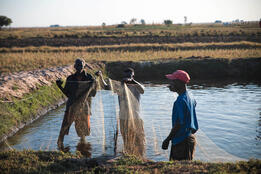By Mafalda Duarte
CEO of the Climate Investment Funds
We are living through a moment of unprecedented shocks to our geopolitical, social, and economic systems. As the pandemic continues and war in Ukraine rages, food and commodity prices have reached all-time highs. Gas prices have skyrocketed as well. Yet one commodity shock has received less attention: Steel.
Russia is the third-largest exporter of steel in the world; Ukraine is eighth. Together, they cover one-third of the EU’s steel imports. Over the past year, prices have soared, with some types of steel selling at 1,400 euros per ton.
Why does this matter? Cities and nations have an incredible appetite for steel, one of the most commonly used metals in the world, as they look to grow and build infrastructure. This demand for steel isn’t going away anytime soon: the global need for infrastructure investment is forecast to reach 94 trillion dollars by 2040. But as more and more steel is needed, we must grapple with the fact that the production of steel is also one of our greatest contributors to climate change.
Steel singlehandedly produces more CO2 than any other heavy industry, comprising 8% of total global emissions. It is one of four hard-to-abate subsectors in the industrials space—along with cement, ammonia, and ethylene—that together are responsible for almost one-quarter of all global CO2 emissions.
The IEA tells us that by 2030 carbon emissions from heavy industry must decline by 20% and by 93% before 2050 for us to achieve our climate goals. In short: There is no winning our climate fight without reinventing these industries. And there is no better moment to do so.
Right now, the instinct of cities and nations is to do what is necessary to “get by”: scramble to meet short-term energy and commodity demands, try to bring down prices, and return to the status quo. This is short-sighted. Now more than ever, we need to begin a long-overdue transformation.
In some cases, abatement lags due to technical production factors: the need for very high heat and process emissions of CO2. Others are popular because of economic factors: high profit margins, the cost of getting into the business, the trade benefits they bring.
Yet overwhelmingly, what these materials have in common is they will be produced in developing nations. In 2021, 82% of global steel production came from the developing world, including 57% from China. 92% of global cement production came from the developing world, as well, including 56% from China. Our climate fight hinges on how we help developing nations finance new solutions.
At the Climate Investment Funds (CIF), our work for almost a decade and a half has taught us a great deal about transforming sectors and financing a better climate future for developing nations. We have taken that expertise and we are applying it to these hard-to-abate sectors through a soon-to-be operational industry decarbonization program that we believe will help transform these sectors in developing nations and in turn the global marketplace for them.
So what does our roadmap look like? It begins with a baseline of energy efficiency (EE) measures. Although many gains have already been made in EE, there is still scope for improvement, especially in those nations continuing to use older equipment.
The IEA additionally projects that hydrogen and carbon capture technologies will contribute around half of the emissions reductions in heavy industry by 2050. We must scale up financing to expand these and related technologies and additional research immediately.
Third, we absolutely must bring more clean energy into the process. 60% of the aluminum industry’s emissions, for example, come from electricity alone. Some nations, along with some of the world’s largest aluminum-producing companies, have achieved progress through carbon capture, utilization and storage technologies as well as broader transitions to renewable energy—including hydro and geothermal—in their production.
These aluminum players can also look to decarbonize process emissions, moving to new technologies that can provide heat without the use of fossil fuels. But financing at scale is needed to support innovative ideas and solutions like these that move this agenda forward, above all in the developing world.
This kind of work must happen in collaboration: not only at the facility level, but at the corporate, sectoral, and national levels as well. At the corporate level: We should drive collaboration and private-sector participation in achieving national climate targets. At the sectoral level: We can develop personalized roadmaps across industries, providing unified leadership and setting meaningful targets. At the national level: we must help developing nations and their governments scale up ambition and climate plans.
Above all, there must be coordination across these levels: holistic goals, strategies, and communication as we work toward a cleaner future. None of it will be easy or come cheap. But it is far more cost-effective in the long run. It is a crucial step to solve our climate crisis and save our future.




